Photos: Fossilized dino embryo is new oviraptorosaur species
Dino Embryo
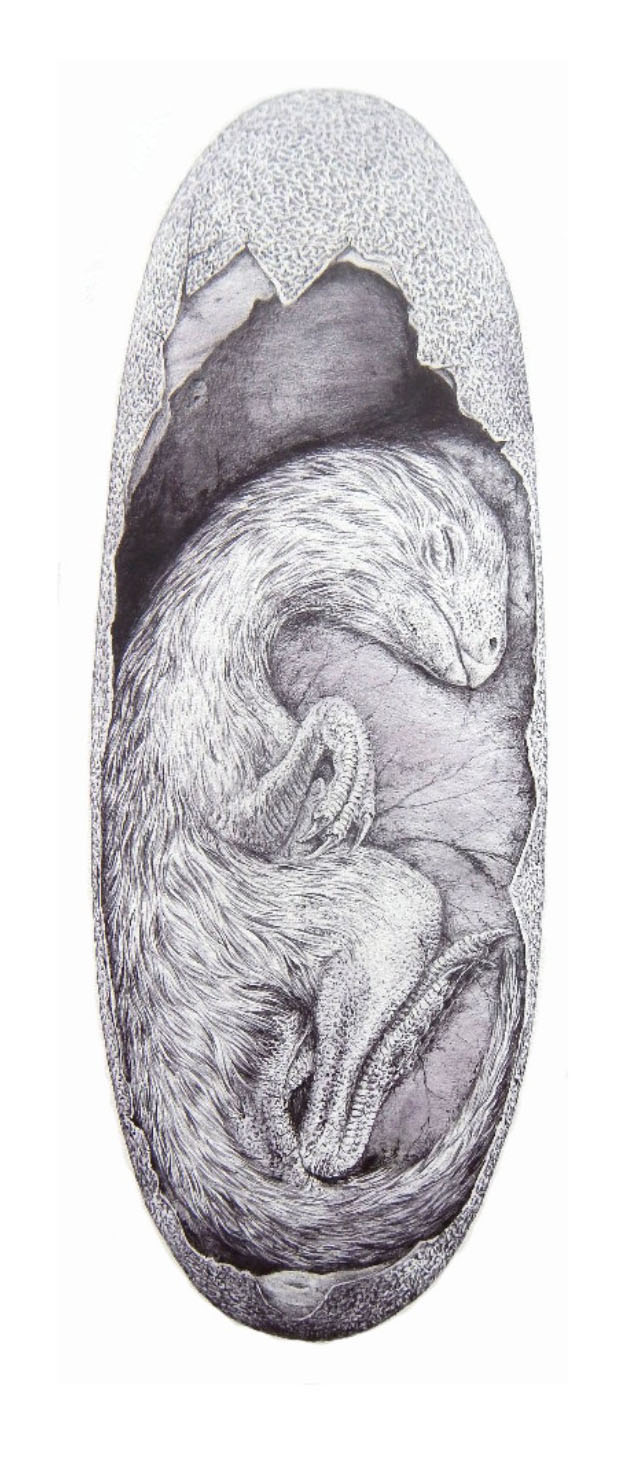
In 1992, a Chinese farmer discovered an extraordinary fossil: the embryo of a rare and giant bird-like dinosaur that lived 90 million years ago. The embryo, nicknamed Baby Louie, represents a newfound species of giant oviraptorosaur dinosaur, researchers announced today (May 9) in a new study. They named the newly identified species Beibeilong sinensis, which means "baby dragon from China," in a combination of Mandarin and Latin.
Related: Read the full story on Baby Louie or watch the video
Mom and Dad
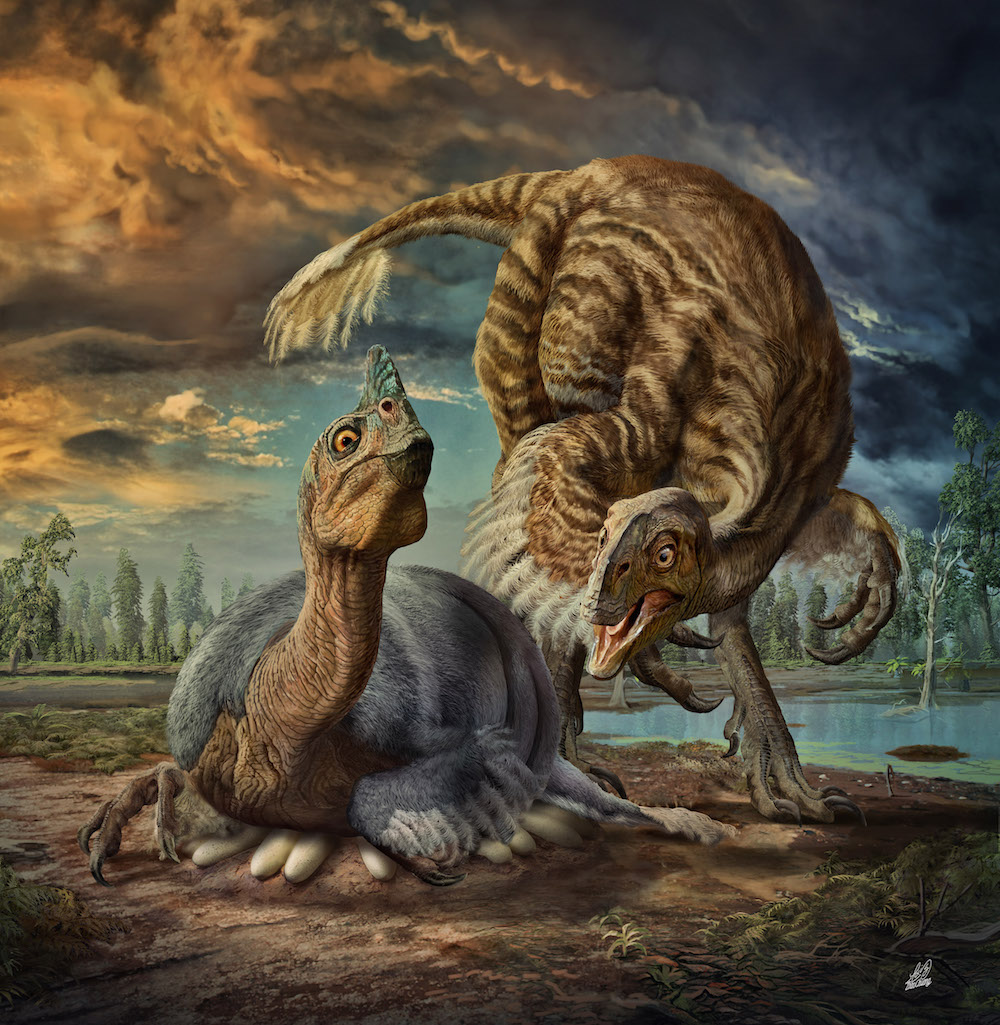
B. sinensis lived about 90 million years ago, during the Cretaceous period. The adults of this species were enormous, measuring up to 26 feet (8 meters) long from the snout to the end of the tail, and weighing up to 6,600 lbs. (3,000 kilograms) when fully grown at age 11.
Baby dinosaur

The embryo of B. sinensis was small compared to its parents. After hatching, it would have weighed less than 9 lbs. (4 kg).
X marks the spot

A map (top) shows Nanyang, a city in China's Henan province. The star marks the fossil site where Zhang Fengchen (bottom) found and collected the fossil in December 1992 and early 1993.
Eggs-travagant find
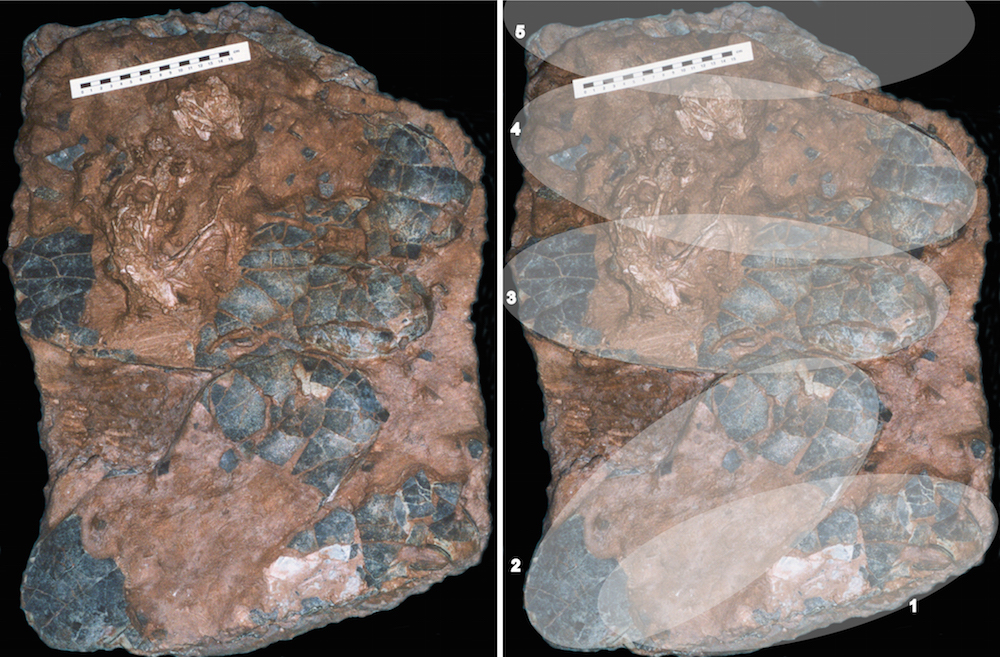
The fossil (left) and a digital overlay (right) shows where the eggs were placed before they broke and fossilized. Notice the skeleton of the embryo next to the ruler.
Inside the shell
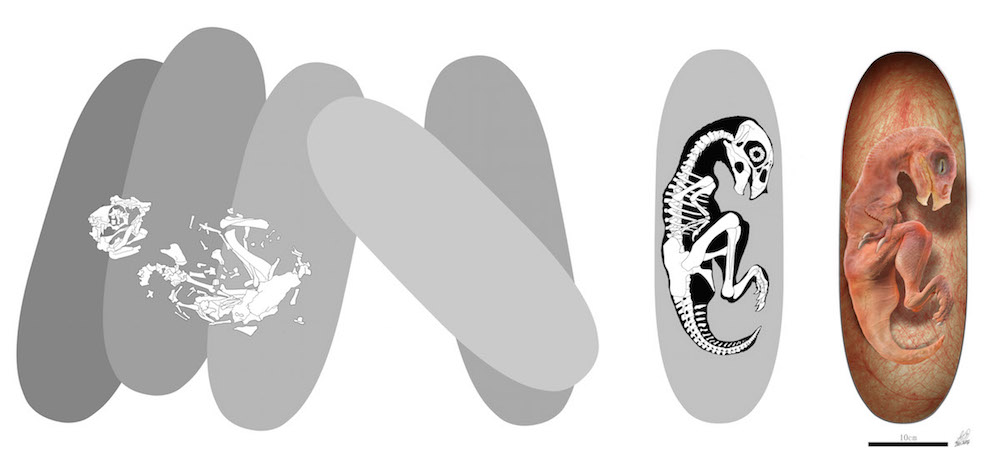
This illustration shows how Baby Louie was fossilized over the eggs (left). The other drawings (right) show what Baby Louie would have looked like inside its shell.
Sign up for the Live Science daily newsletter now
Get the world’s most fascinating discoveries delivered straight to your inbox.
Baby dragon
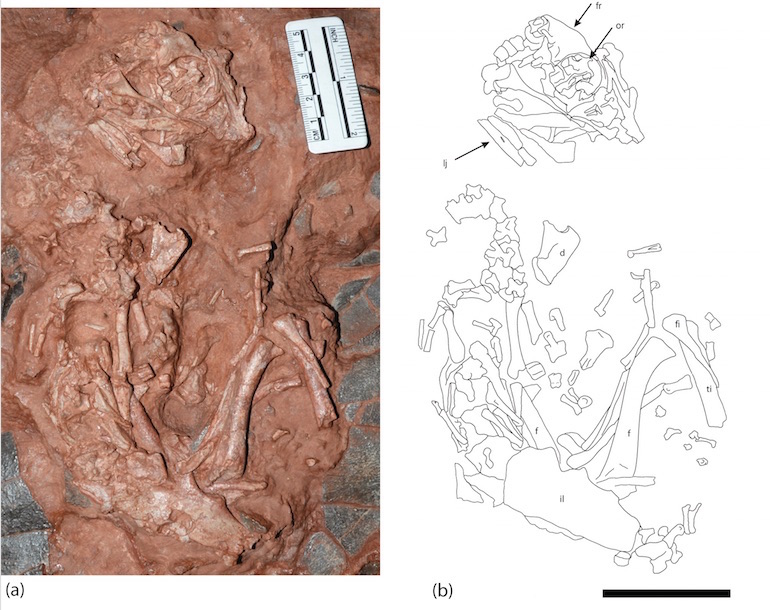
A photograph and illustration of the 15-inch-long (38 centimeters) Baby Louie.
The dinosaur's scientific name, Beibeilong sinensis, honors Chinese culture. In Mandarin, "beibei" means "baby," and "long" translates to "dragon." The species name is derived from the Latin word for China. Thus, the dinosaur's name means "baby dragon from China."
Eggshell layers
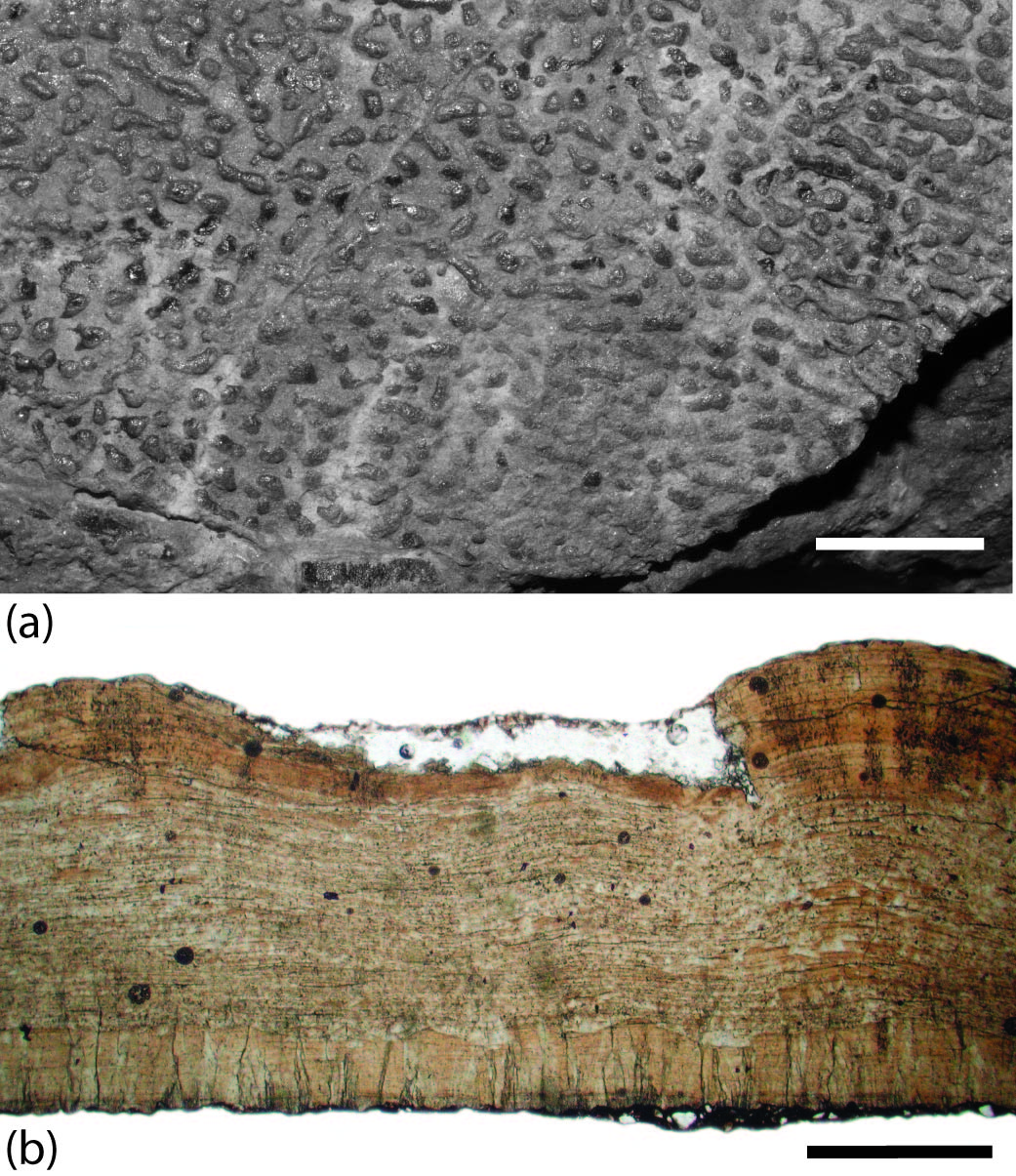
This photo (top) shows the pattern on the outer surface of the giant eggshells, known as Macroelongatoolithus eggs. A cross section (bottom) shows the Macroelongatoolithus eggshell's two microstructural layers. The scale bar is 1 millimeter (0.04 inches).
Macroelongatoolithus eggs are often laid in clutches up to 10 feet (3 m) long.
Fossil bones
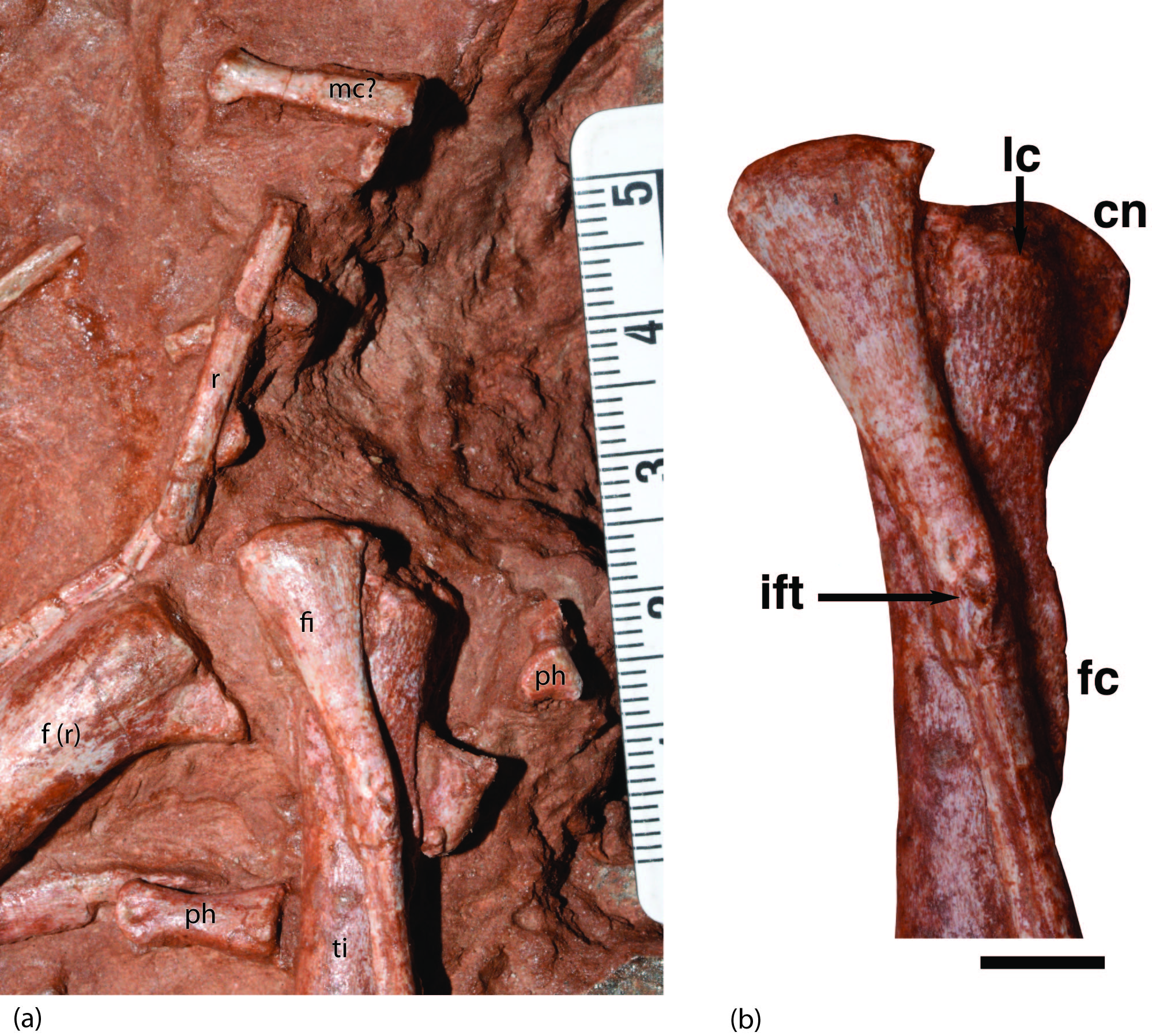
These bones (left) are in the region of Baby Louie's right knee. The scale bar is in centimeters.
The other bones (right) show the end of Baby Louie's right tibia and fibula. The scale bar is 5 mm (0.2 inches).
Crocodile comparison
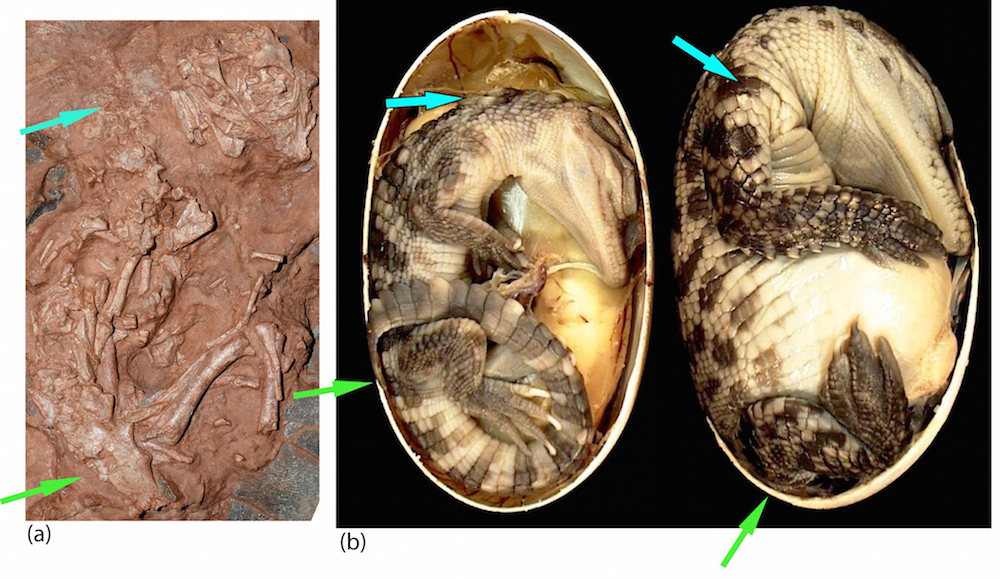
This image depicts a comparison of B. sinensis with a Siamese crocodile embryo. The aqua and green arrows show the neck and hip orientation, respectively.
The B. sinensis embryo looks more similar to a 51-day-old crocodile embryo (right) than it does to a 78-day-old embryo (right), which is close to hatching. This comparison suggests that the B. sinensis embryo died before completing three-fourths of its development in the egg.
Related: Read the full story on Baby Louie or watch the video

Laura is the archaeology and Life's Little Mysteries editor at Live Science. She also reports on general science, including paleontology. Her work has appeared in The New York Times, Scholastic, Popular Science and Spectrum, a site on autism research. She has won multiple awards from the Society of Professional Journalists and the Washington Newspaper Publishers Association for her reporting at a weekly newspaper near Seattle. Laura holds a bachelor's degree in English literature and psychology from Washington University in St. Louis and a master's degree in science writing from NYU.









